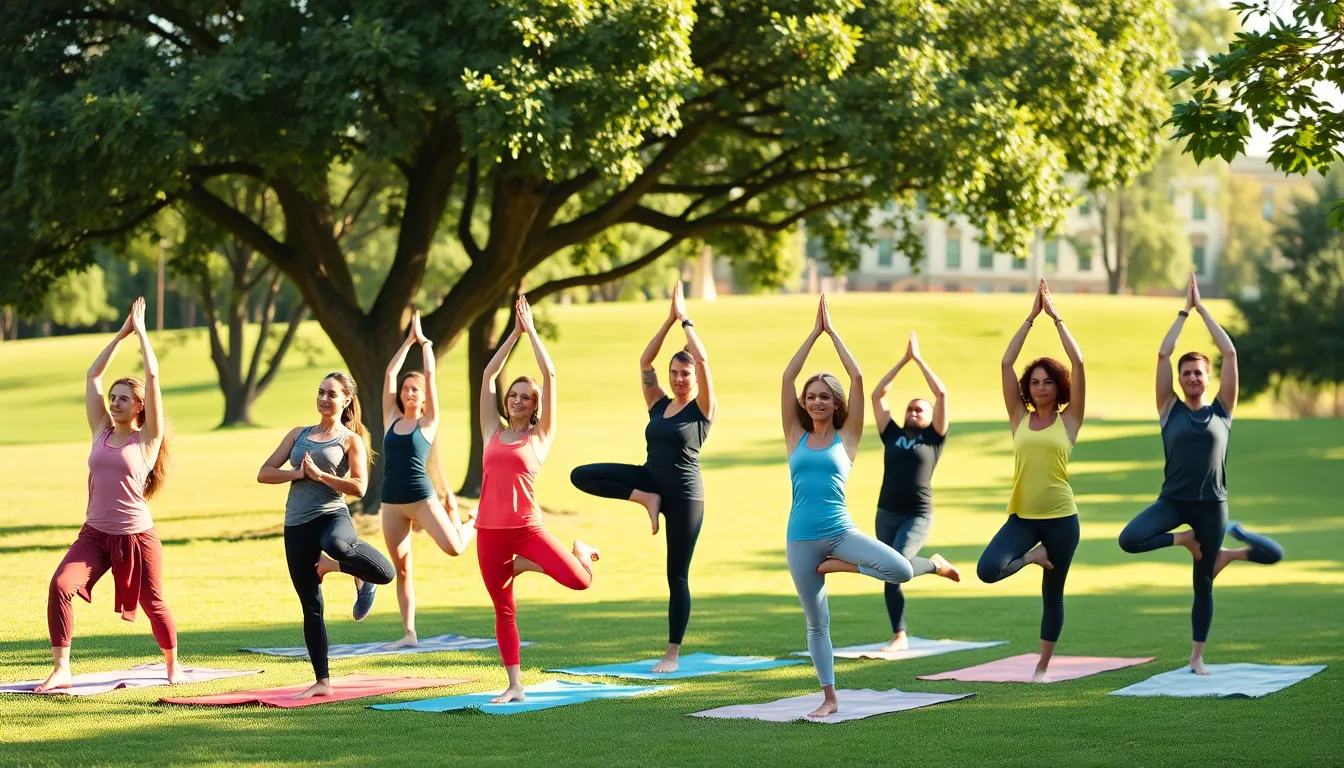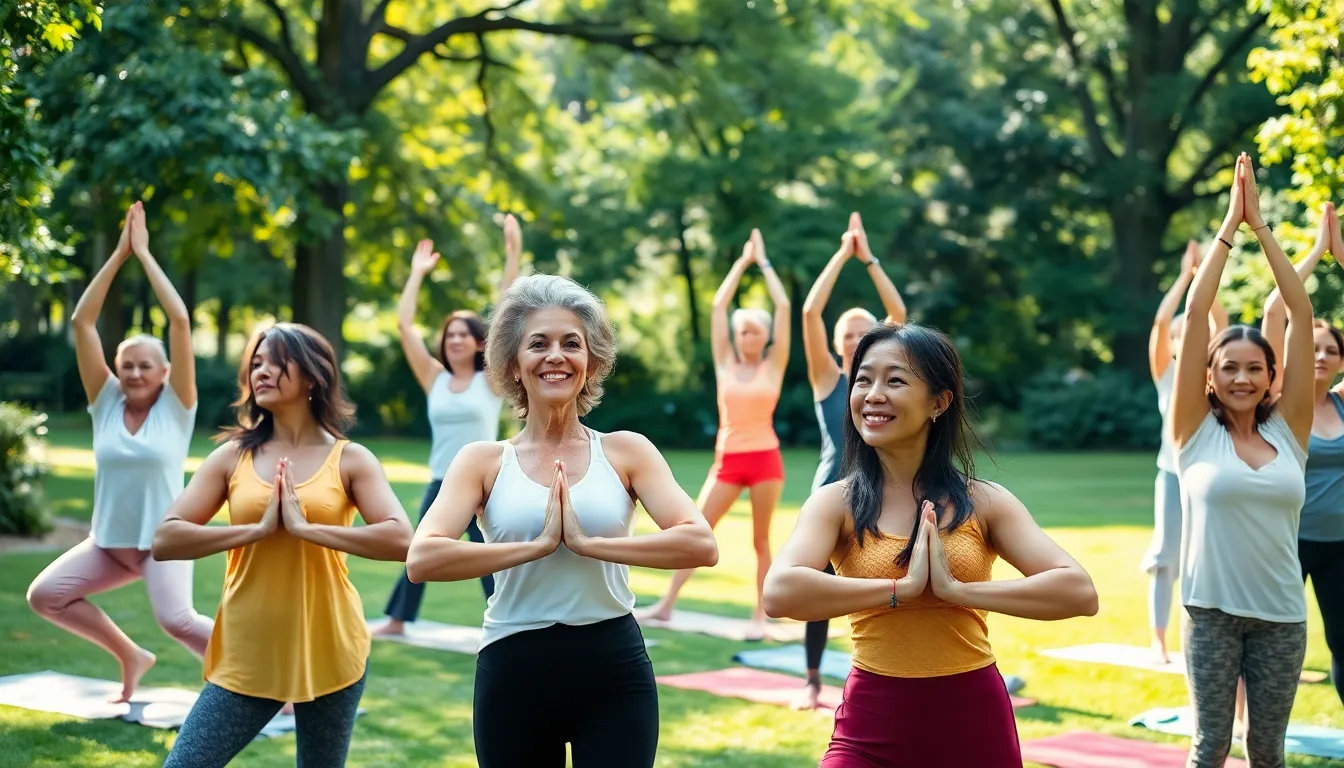In a world that often glorifies extreme workouts and sweat-drenched gym sessions, gentle fitness routines offer a refreshing alternative. They’re like a cozy blanket on a chilly day—inviting, warm, and oh-so-comfortable. Whether it’s yoga, tai chi, or leisurely walks, these routines focus on nurturing the body while keeping the spirit high. Who says fitness has to feel like a punishment?
Table of Contents
ToggleUnderstanding Gentle Fitness Routines
Gentle fitness routines prioritize comfort and accessibility in physical activity. They offer a nurturing approach to fitness that fosters overall well-being.
Definition and Characteristics
Gentle fitness routines include activities designed to be low-impact and easily adaptable. These routines often feature movements that promote flexibility, balance, and relaxation. Activities like yoga, tai chi, and leisurely walking are prevalent examples. Benefits extend beyond the physical, encouraging mindfulness and stress reduction. Individuals may find these routines suitable for all fitness levels, supporting a broad demographic. Each session can be customized to accommodate personal preferences and abilities.
Benefits of Gentle Fitness Routines
Gentle fitness routines provide numerous advantages for participants. Improved flexibility results from regular practice, allowing for increased range of motion. Additionally, these activities enhance mental clarity and emotional resilience. People often experience reduced stress levels, improving their overall mood. Physical benefits include better circulation and muscle tone without the risk of injury associated with high-impact exercises. Engaging in gentle fitness can also foster a sense of community through classes or group sessions. Participants frequently report higher levels of enjoyment and satisfaction compared to traditional workouts.
Types of Gentle Fitness Routines

Gentle fitness routines encompass various activities designed for comfort and accessibility. These options cater to different preferences and fitness levels.
Yoga and Pilates
Yoga blends physical postures, breathing techniques, and meditation for overall wellness. It enhances flexibility and balance while promoting relaxation. Pilates emphasizes core strength and stability, improving posture and creating a toned physique. Both practices offer modifications to suit individual needs, making them accessible to various fitness levels.
Low-Impact Aerobics
Low-impact aerobics involves rhythmic movements that get the heart rate up without excessive strain on joints. Participants can engage in activities like water aerobics and dance-based classes, focusing on coordination and endurance. This option allows individuals to maintain cardiovascular health while minimizing injury risk. Many find these classes enjoyable and motivating, contributing to long-term fitness adherence.
Tai Chi and Qigong
Tai Chi consists of slow, flowing movements that promote relaxation and mindfulness. Practicing Tai Chi enhances balance and coordination, beneficial for individuals of all ages. Qigong combines gentle movements, controlled breathing, and meditation, fostering mental clarity and physical well-being. Both practices encourage social interaction, often enjoyed in group settings, enhancing community connections.
Creating Your Own Gentle Fitness Routine
Creating a gentle fitness routine involves understanding personal needs and preferences. It’s essential to tailor activities to ensure enjoyment and effectiveness.
Assessing Your Fitness Level
Assessing fitness levels starts with self-reflection on current capabilities. Consider daily activities that require physical effort and notice any limitations. Seeking guidance from healthcare professionals can offer valuable insights into individual restrictions. Engaging in a simple mobility test, such as reaching down to touch toes, can indicate flexibility levels. Participants can also utilize fitness apps to monitor progress over time. Evaluating stamina during low-intensity activities, like walking or stretching, helps determine readiness for more structured routines.
Setting Realistic Goals
Setting realistic goals keeps motivation high while ensuring attainable success. Start by identifying specific outcomes, whether it’s improving flexibility, enhancing balance, or increasing overall well-being. Goals should also align with personal interests, making the activities enjoyable and sustainable. Setting measurable targets, like practicing yoga three times a week, creates a clear benchmark for progress. Adjusting expectations based on ongoing assessments encourages a positive experience. Prioritizing mindfulness during periods of activity enhances awareness and satisfaction with achievements, significantly impacting overall fitness journeys.
Tips for Staying Committed
Staying committed to gentle fitness routines requires intention and thoughtful strategies. Consistency enhances benefits over time, ensuring progress and enjoyment.
Finding the Right Environment
Selecting a comfortable environment plays a crucial role in maintaining commitment. Individuals benefit from spaces that promote relaxation and focus. Quiet areas, whether at home or in nature, encourage mindfulness during workouts. Accessibility also matters; choosing locations that minimize travel time fosters regular participation. Additionally, social settings can provide motivation, enhancing accountability through group participation.
Incorporating Variety
Introducing variety helps maintain enthusiasm for gentle fitness routines. Trying different activities, such as yoga, tai chi, or dance classes, keeps workouts fresh and exciting. Mixing formats can challenge the body in new ways, fostering overall improvement. Incorporating outdoor sessions, like walking in different parks or practicing yoga in a garden, adds a refreshing twist. Rotating between indoor and outdoor venues enhances the experience, making it more engaging. Variety inspires long-term commitment, encouraging regular practice while preventing boredom.
Gentle fitness routines offer a refreshing approach to physical well-being that prioritizes comfort and enjoyment. By embracing activities like yoga and tai chi, individuals can nurture their bodies while fostering a positive mindset. These routines not only enhance flexibility and balance but also encourage mindfulness and stress reduction.
With their adaptability, gentle fitness practices cater to all skill levels and promote a sense of community. Participants often find greater satisfaction and motivation when engaging in supportive group environments. By focusing on personal preferences and setting achievable goals, anyone can embark on a fulfilling fitness journey that emphasizes well-being over intensity. Ultimately, gentle fitness routines stand as a testament to the idea that movement can be both enjoyable and rewarding.



